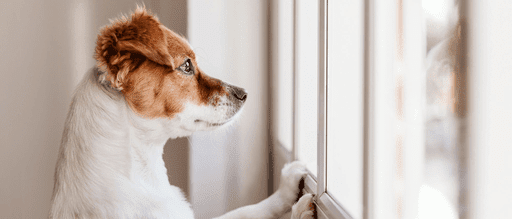Preparing Your Dog for Life After Lockdown: Dealing with Separation Anxiety
As lockdown restrictions ease and many of us prepare to return to our workplaces, one concern looms large for dog owners: will my furry friend suffer from separation anxiety when I'm no longer around 24/7? Separation anxiety is a common issue among dogs and can manifest in various distressing behaviors, not just for the dog but also for the owners and even neighbors. With our dogs accustomed to constant company during lockdown, the transition back to a regular work routine can be challenging. So, how can you help your dog adjust and prevent separation anxiety?
Understanding Separation Anxiety in Dogs
Separation anxiety can affect dogs of all breeds and ages, causing them stress and leading to disruptive behaviors such as whining, barking, chewing, scratching, and even urinating in the house. The sudden change from constant companionship to periods of solitude can trigger or exacerbate separation anxiety in dogs, particularly those who have a history of the condition. Even dogs who have never shown signs of separation anxiety before may develop such behaviors as they adjust to their owners' absence.
Preparing Your Dog for Independence
Fortunately, there are proactive steps you can take to help your dog cope with being alone again:
Gradual Separation: Start preparing your dog for your return to work by gradually reintroducing periods of alone time. Begin with short intervals and gradually increase the duration over time. Use positive reinforcement and rewards to create a positive association with being alone.
Establish a Routine: Reestablishing a regular routine can help your dog feel more secure and reduce anxiety. Stick to consistent meal times, walks, and play sessions, mirroring your usual workday schedule as closely as possible.
Limit Access: If your dog has become overly attached to you during lockdown, gradually reduce their dependence by limiting access to certain areas of the house. Start with short separations and gradually increase the duration as your dog becomes more comfortable.
Exercise and Stimulation: Ensure your dog gets plenty of physical exercise and mental stimulation to keep them occupied and happy. Regular walks, interactive toys, and puzzle games can help alleviate boredom and anxiety.
Sniffing Opportunities: Allow your dog ample opportunities to explore and sniff during walks. Sniffing is mentally stimulating for dogs and can help tire them out, making them more relaxed when left alone.
Returning to Work: Greeting Your Dog Calmly
Upon your return home, greet your dog calmly and affectionately. Avoid making a big fuss, as this can reinforce anxious behaviors. Instead, offer calm reassurance and gradually ease back into your usual routine.
Seeking Professional Help
If your dog continues to exhibit signs of separation anxiety despite your efforts, consider seeking professional help from a veterinarian or animal behaviorist. They can provide guidance and support tailored to your dog's specific needs.
In conclusion, preparing your dog for life after lockdown requires patience, consistency, and understanding. By gradually reintroducing periods of alone time, establishing a regular routine, and providing ample exercise and stimulation, you can help your dog adjust to the transition and prevent separation anxiety. Remember, every dog is unique, so be patient and observant, and seek professional help if needed. With the right approach, you can help your furry friend thrive in their newfound independence.

%20(1).png)

.jpg)
%20(1).png)




0 Comments